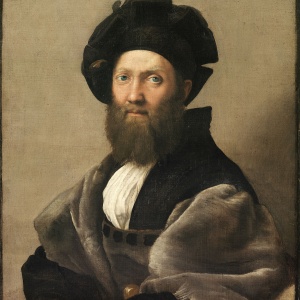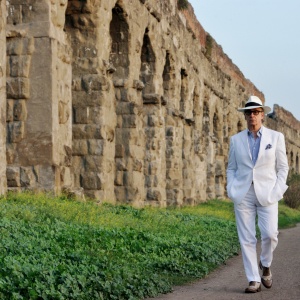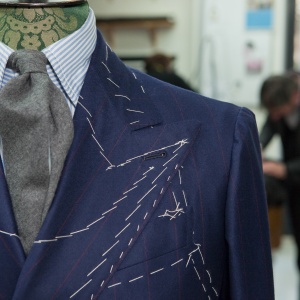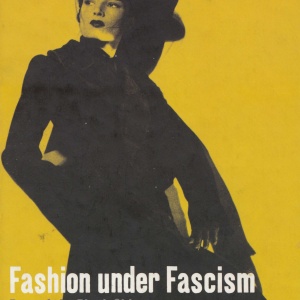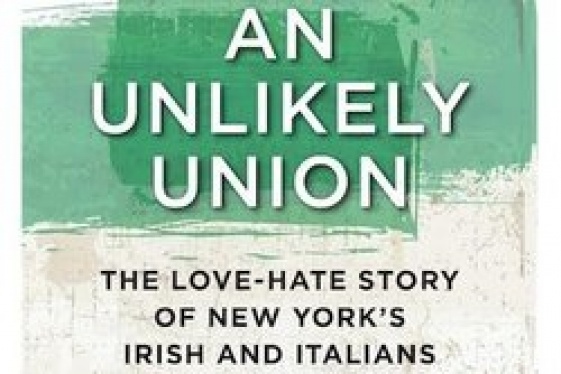
Eugenia Paulicelli (Director of Fashion Studies tracks in the Master of Arts in Liberal Studies at CUNY)
La moda, una nuova chiave per studiare in America la cultura italiana

When we think about Made in Italy, the first word that comes to our mind is Fashion. It is an important part of the Italian lifestyle, and it represents some of the best talents of we, the Italians.
I've been searching for somebody who could explain to us and our readers why is that, and how this influenced the relationship between Italy and the US. The perfect person for the job is Professor Eugenia Paulicelli, an Italian scholar working and living in the US and author of several books about this important aspect of being Italian.
Eugenia, one of your books is called Writing Fashion in Early Modern Italy. From Sprezzatura to Satire. It seems a very interesting way of analyzing an important part of Italian history such as the renaissance, through fashion. Could you please tell us something more about this?
As a premise, I would like to say that my perspective on Italy and its culture, of which fashion is one of the most important manifestations, is based on two important factors.
One is that I am an Italian who lives in the US, secondly that I pay a lot of attention in my research to the relations between Italy and America. That said, it is clear that my perspective on Italy and things Italian might be slightly different from those Italians who have never left their country of origin. In fact, for me it has been an incredible experience to think of Italian identity and culture from this vantage point. This also has given me the chance to explore a number of features and characters of Italian identity.
For me, fashion is not only clothing. Rather, it is a system of social codes and behavior, lifestyles, aesthetic and political choices. And it is, of course, a powerful manufacturing industry. If we study the history of fashion with an eye to the history of Italian culture and its implications with social change, politics and the arts and design movements, we will get a richer picture. In this complex history, there are many points of intersection between Italy and the US. My approach has been interdisciplinary and with an international perspective.
This means reading scholarly works that belong to different domains to find the points of contact between them in order to corroborate my findings and also to study Italy not in isolation but in relation to other nationalities, cultures and countries. Indeed, Italy has been the site par excellence of this dialogue among different cultures and traditions harking back to classical antiquity.
Since Italian fashion was launched in the post-WWII years, one assumes that Italian fashion was born only when it began to compete with Parisian hegemony. But this I think is wrong because it prevents us from looking in depth at more distant periods of the past to find the deeper implications of the role of fashion had in the construction of Italy and Italians.
One important example is the concept of “sprezzatura,” which I have examined at length in my book Writing Fashion on the Renaissance.
Why the Renaissance? Because if we think about the Italian nation and the important periods for the conception of this idea of Italy and its culture, heritage and identity, we have to look at the Renaissance, which has been and still is crucial to understand this relationship. This is the phase of history in which nations and the idea of nations came to the fore. And why “sprezzatura”? The concept of was elaborated by Baldassarre Castiglione, a diplomat and politician, but also a very fine humanist and writer. Sprezzatura” is a staple in Italian culture, philosophy and aesthetics. It is a sense of style, knowing what you know and what you are and trying to work on it in order to reach the best you can.: a “constructed naturalness” that allows the individual to show him/herself at its best but without showing the work done to achieve that kind of image or style.
Castiglione applied this concept not only to dress, fashion and elegance, but also to writing, to behavior, even to dance. The perfect dancer, says Castiglione, is s/he who has a certain lightness, the perfect movement of the body in the space without showing all the effort that has been expended in order to achieve that kind of naturalness and grace.
It's a very fascinating concept, one that has been applied many times in Italian history. When I was doing my research for the book, I noticed that the term had been appropriated by the blogosphere. There were more than 50.000 hits containing the word "sprezzatura." These bloggers use the word in Italian mainly because it is hard to translate. Many of them were using it to talk about contemporary style, especially male suits and masculinity. "Sprezzatura" also describes the idea of coolness and beauty in Renaissance style, which Castiglione applies to both men and women. This is why I think it can be used to describe a certain Italian identity though the centuries. “Sprezzatura” is now a global passport indicating elegance and coolness that coincides in the imagination with Italian style.
Even cinema helps understanding this concept, right?
Recently I also published a book about Italian Cinema and Fashion, Italian Style: Fashion & Film. The book ends with an analysis of the film La Grande Bellezza by Paolo Sorrentino. The character Jep Gambardella, played by Toni Servillo, is a quintessential representation of the concept of “sprezzatura”: you can easily see it from the way he walks through the city of Rome! But besides being a philosophical and aesthetic concept, "sprezzatura" has also a great deal to do with material culture and fashion, with the variegated faces of the Made in Italy process.
When we think of Made in Italy, we usually think of the post-war years, the launch of Italian fashion, which, by the way, came to the fore because America and American journalists were involved in spreading the word. But Made in Italy as the idea of a fashion linked to the nation, its heritage and cultural history has a much longer history that goes back even to the botteghe artigiane of the Middle Ages that were operating in Italian cities at that time.
Besides, the Made in Italy is global and local at the same time. Global, because it has an impact on international culture. You can't understand the Made in Italy if you don't think about the appeal that, even today, it has on people from all over the world: think about America, or Asia. Local, because it is – yes - a collective brand, but one made up of many different local "Mades in Italy". The history of Italy is one of several diverse localisms: each Italian city and region has a very, very strong local identity and rich tradition, not only in culture and in arts, but also in artisanship, in craftsmanship. These are different skills, located from place to place, that artists and craftspeople have in practicing with their hands. These factors fascinate foreigner visitors and especially Americans.
For example, Attolini promoting his idea of the Made in Naples: "La Sartoria Napoletana", which has a very, very distinct tradition in Italy. Italian American actors and celebrities are capitalizing and investing in Italy and in its multiple localities. John Turturro and Naples is one example, but there are many more.
Another example is Brunello Cucinelli: a very successful luxury brand that has been able to gain visibility through the stories it tells, all linked back to its territory, the Umbria region with its medieval tradition, the Renaissance castle. Cucinelli has never lost sight of the companies' local roots and is well-known for the way it treats his workers, practicing so-called "Capitalismo Umano" (Human Capitalism). You can't understand Cucinelli, and his Made in Italy, if you don't link it to Umbria and its particular geographical, cultural and traditional reality.
This is fundamental if we are to understand the Made in Italy and its value, because if we lose the ability of these skilled people, the artisans, the Made in Italy doesn't mean anything, especially to foreigners.
Another book you wrote examines fashion during Fascism: was there a specific Italian fashion back then?
It actually goes back to the other answer I gave you about the long history of Italian fashion and its implications with certain historical periods. Why fascism? Because it was in the 1930s that the fascist regime nationalized fashion. Mussolini wanted to create a "national official fashion" because Italy had an incredible number of artisans and artists but despite this the nation was not competing with Paris, which had established itself at that time as the world city of fashion.
Italian fashion didn't exist as a brand: so in the 1930s Mussolini created the "Ente Moda,” an institution designed to organize the different industries in this field (France had already boasted of one of these since the end of the 19th century). Italy was quite young compared to other European countries, and it was decided that the Italian fashion would give presence and visibility to Italy abroad. Besides, fashion was very instrumental in the fascist trend towards modernity.
Why are there so many Italians among the most important people in the fashion world? Is there something in our cultural heritage, maybe our DNA is particularly creative for a specific reason?
Well, I say this in a very humble way, but it is a fact that Italy is one of the most beautiful countries in the world: the arts, the monuments, the cities are just amazing. And I think that fashion is a part of it, because fashion has to do with aesthetics and beauty! There is a link right there, because you're surrounded by the richness of this beauty!
Now, about the DNA, I don't know, but it may be cultural, because we have important traditions of creativity: that, again, goes back to le botteghe of the Renaissance. The idea of the Made in Italy, of the workshop, the craftsmanship goes back to an idea that I think we have forgotten a little bit, while we should instead really cherish and defend it.
This approach is the same that our scientists and researchers are using looking ahead, towards the future: that is Italy, too. Nobody can use tradition the way we do, because it's in our history. Even other countries, France for example, now come and produce goods in Italy: so we have to develop this, not thinking about this skill in a nostalgic way, but in an innovative way. Teaching young Italians to specialize in this field, for instance. Again, Brunello Cucinelli is a good example, and he's not the only one: he established a school of crafts, "La Scuola dei Mestieri", where high school students can apply and receive a salary for 9 months in order to learn different kind of skills. I think that's important because we're living in a society in which more and more I think we need to connect hands with the brain ... it's our richness!
Fashion has also had a role in the integration of many thousands of Italians who emigrated to the US. In particular, many Italian women used to work in this sector, to bring a few bucks home while they were bringing up their children...
As you know there have been many different waves of immigration. If we go back to the end of the 19th century, the period of mass migration, and think of the fashion industry, all the American garments' industries were actually built by Italian and Jewish hands, by workers and skilled people who worked in terrible conditions. It’s enough to recall the Triangle Shirtwaist Factory fire in 1911, where 146 women died, and most of them Italian young girls.
At that time Italians were being stereotyped as "Mafiosi", while they desperately wanted to integrate into American society. This is why they wanted their children to speak English. Now things are completely different: Italians, and also Italian Americans, have received a great deal of recognition. They have contributed immensely to the development and construction of the American nation and its status as a super-power.
Even from a strictly commercial point of view, fashion and Made in Italy are a fundamental aspect of the relationship between Italy and the US. What can Italy do to improve exports in this sector to the US?
We can't just say "we're cool, we are the best!" It's a kind of empty propaganda, in my view. I think we need to show the way we work and really narrate the story of what's behind it all, not only the beautiful outcome. I am talking about the series of skills performed by craftspeople that bring us the high quality products that make up the Italian brand.
Besides, here in America we see a great deal of discussion about the minimum wage, the rights of the workers, the need to save the environment and to create a world where there is more equality and social justice. Some of these conversations are taking place in the world of fashion: Italy should be part of this.
Italy also has to improve its promotion of its young talents. Of course, the big brands an their big names deserve to be known and promoted, but what about the young designers, start-ups who have talent and creativity, but don't have the means in order to emerge into the fashion world? If we think about it, Italy is a small country, geographically, but it's so rich! I think that Italy and the US should work together in educating people, teaching them about fashion as a part of the cultural heritage just like food is. What we need is a more cohesive, far stronger bridge between universities and Italian and Italian American institutions abroad. I also think that the Italian government should invest in creating a serious map of what Italian language and culture programs are doing in the US.
"Italianness" also means care for appearances. If you grow up in Italy, you are surrounded by beauty, by a certain cultural life, by art. I think that there is a connection between the culture you grow up in, and the way you dress. In Italy, you didn't have to belong to the aristocratic class to dress up elegantly: even in peasant culture it was customary to put on a very nice suit or pair of pants and nice shoes for the holidays or to go for a walk in the center of the town. This is part of our cultural identity. Even today, in the US, there are many Italian Americans who maintain this level of attention and like to dress well, it is a sort of reconnection with the identity of their culture and their country!
I know that next fall in New York you will launch a Graduate Program on the Made in Italy. Could you tell us a bit more about it?
I've spent many of the last several years introducing the study of fashion into the academic environment. I founded and direct a Fashion Studies program in a Master of Liberal Studies at the CUNY Graduate Center. As I mentioned before, I think that fashion should be studied not only in fashion schools: to study its culture and history is equally important, if not more so. This has been my battle as an academic.
Italian Studies programs have been more centered on a traditional approach, towards literary studies. But many things are changing: we now have a Master in Italian Studies at Queens College, CUNY (City University of New York). I've been working on innovating the curriculum, which means studying Italian culture in a new framework, including visual culture, the concept and history of the Made in Italy and of the Italian fashion. I am also working with some graduate students to design Italian language courses using fashion: we held a workshop for High School teachers last February co-sponsored by IACE (Italian American Committee on Education).
The new certificate program I have designed is called “Italian Culture in the 21st Century" (IC21) and will be launched in the fall of 2017 along with a Fabric of Cultures exhibition and a Made in Italy/Film Festival based at Queens College and the Graduate Center.
The program focuses on the study of Italian culture through the Made in Italy. We will connect students to industries and businesses, and have interdisciplinary classes: for example, courses on marketing and advertising. I am teaching a pilot class this semester that will be further developed next year. We are building a site where more information can be found. We have also just signed an internship agreement between CUNY and the Italian Trade Commission that will be linked to this new program.
What I would like to underline is how it is essential to understand that the Made in Italy needs to be studied and understood with a strong humanistic background, with the same kind of sensibility. We don't have to look at this only through numbers or business: the Made in Italy really is different from other brands, because it has that cultural manufacturing base that distinguishes us. If we don't understand that, if we don't have the background in order to analyze it, but also to sell it and to communicate it to the world, then we miss the point. As an educator, my role is also to form people who understand these important connections!
You may be interested
-
2015 scholarship competition
The La Famiglia Scholarship committee is pleased to announce the financial aid competition...
-
An Unlikely Union: The love-hate story of Ne...
Award-winning author and Brooklynite Paul Moses is back with a historic yet dazzling sto...
-
Cathedral of St. John the Divine, Oratorio S...
For the first time ever, The Cathedral of St. John the Divine, in collaboration with the O...
-
Davide Gambino è il miglior "Young Italian F...
Si intitola Pietra Pesante, ed è il miglior giovane documentario italiano, a detta della N...
-
Emanuele: cervello d'Italia al Mit di Boston
Si chiama Emanuele Ceccarelli lo studente del liceo Galvani di Bologna unico italiano amme...
-
Garibaldi-Meucci Museum to Celebrate Ezio Pi...
On Sunday, November 17 at 2 p.m., Nick Dowen will present an hour-long program on the life...
-
Italian Americans media and beyond: between...
The Department of Italian invites you to a lecture by Fulvio S. Orsitto who is an Associat...
-
Italian auto supplier Brembo to build new U....
Italian brakes maker Brembo will build a new foundry in Michigan to expand its manufacturi...






